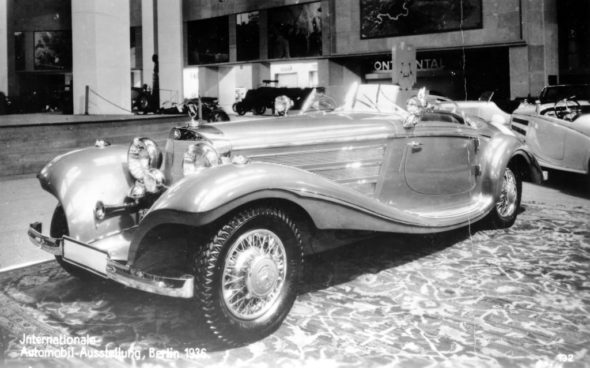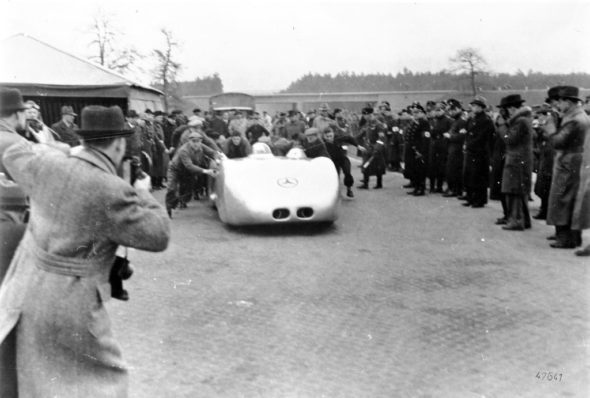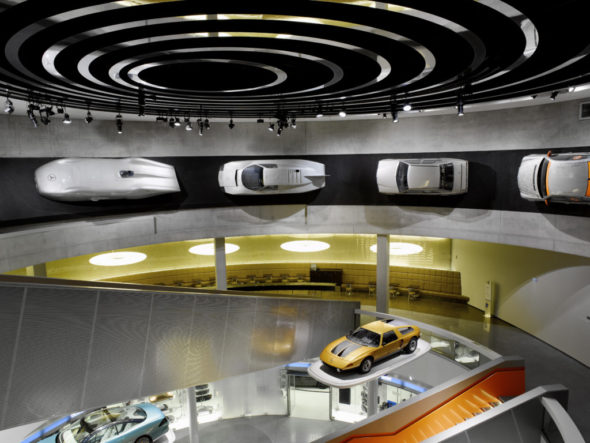
Sports cars of the 1930s from Mercedes-Benz
Mercedes-Benz Classic is exhibiting two outstanding automobiles from the company’s own vehicle collection at the Pebble Beach Concours d’Elegance 2018. This collection is unique in the automotive industry in terms of its importance and size. It includes spectacular racing and record-breaking cars as well as research vehicles and production cars from every era.
Stuttgart. The two vehicles on view at the Pebble Beach Concours d’Elegance clearly illustrate the breadth of the company’s interpretation of automotive sportiness in the 1930s: the Mercedes-Benz 500 K Special Roadster from 1934 stands for the highly elegant aesthetics of a sports car, which the Stuttgart brand provided with customised coachwork bodies.
The W 125 record-breaking car from 1938, on the other hand, recalls the numerous race victories and speed records of the Mercedes-Benz Silver Arrows in that era.
Mercedes-Benz W 125 twelve-cylinder record-breaking car, 1938
The original chassis of the twelve-cylinder record-breaking car from 1938 will be on view for the first time in Pebble Beach together with a body newly built by Mercedes-Benz Classic.
The original body is part of the permanent exhibition at the Mercedes-Benz Museum in Stuttgart. The record-breaking vehicle was based on the Mercedes-Benz W 125 formula racing car from 1937.
A legendary achievement in the vehicle was the absolute speed record on public roads set by Rudolf Caracciola on 28 January 1938: the racing driver reached 432.7 km/h on the autobahn between Frankfurt am Main and Darmstadt over one kilometre with a flying start.
That record remained unbeaten for almost 80 years. The presentation of the original chassis together with the body, which has been reconstructed to the highest standards of authenticity, gives a fascinating insight into the details that made the world record possible back then.
They include, for example, the ice cooling of the engine, which made it possible to further improve the aerodynamics of the fully streamlined body while achieving a sensationally low Cd value of just 0.17.
Technical data of Mercedes-Benz W 125 twelve-cylinder record-breaking car
Raced in: 1938
Engine: V12
Displacement: 5577 cc
Output: 541 kW (736 hp) at 5800 rpm
Top speed: 433 km/h
Mercedes-Benz 500 K Special Roadster, 1935
In the 1930s, Mercedes-Benz dominated the market segment of the international luxury class with its eight-cylinder supercharged cars.
The “Type 500 with supercharger”, 500 K for short, came out in 1934 as a sporty and elegant top model of the Mercedes-Benz passenger car range and was available in eight different body versions.
The crowning glory of all variants was the especially elegant and luxurious Special Roadster. With a price tag of initially 26,000 and later 28,000 Reichsmark (which could also buy a villa at Wannsee), it was also the most expensive version of the 500 K, with only 29 units being produced.
The 500 K and its successor, the 540 K, became legends not just because of their superior power delivery, but also because of their ravishingly beautiful, luxuriously finished coachwork bodies.
They were built under the direction of Hermann Ahrens in the special car construction department, which was newly founded in 1932 at the Mercedes-Benz plant in Sindelfingen.
With their elegant, flowing lines and extensive individualisation options, the bodies made in Sindelfingen were so highly esteemed by customers that, out of the total of 760 customers who purchased a 500 K or 540 K, fewer than 10 percent opted for coachwork from one of the renowned coachwork builders in Germany or abroad – an exceptionally low proportion for a luxury vehicle in those days.
Technical data of Mercedes-Benz 500 K Special Roadster
Production period: 1934 to 1936
Engine: 8/in-line
Displacement: 5018 cc
Output: 74 kW (100 hp), 118 kW (160 hp) with supercharger at 3400 rpm
Top speed: 160 km/h









